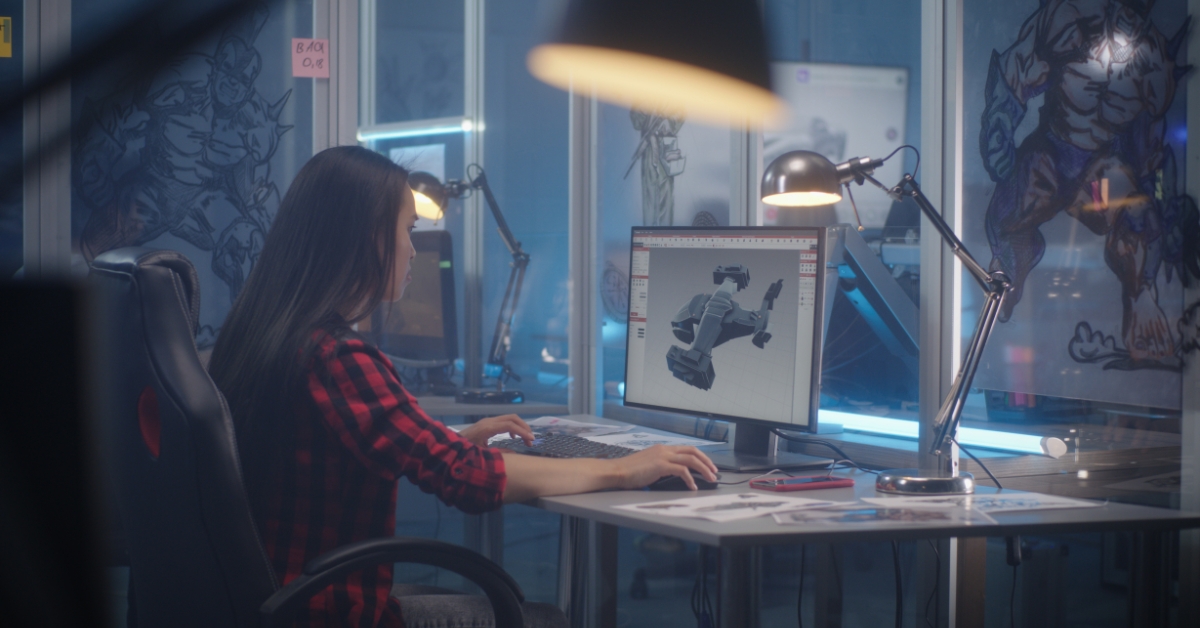
Brought to you by Kevuru Games:
The gaming industry, a realm traditionally dominated by men, is transforming as women strive to break through barriers. While women currently make up only about 20% of the gaming workforce, with an even smaller percentage in leadership roles, recent years have witnessed a growing acknowledgment of gender disparities.
This article aims to delve into the challenges faced by women pursuing leadership roles in game development, shedding light on signs of progress, strategies for career advancement, and recommendations to foster greater gender balance in the future.
In a field rife with ingrained stereotypes and a predominantly male corporate culture, women in game development confront distinct obstacles. Despite these challenges, women are showcasing resilience by honing skills, building networks, initiating corporate reforms, and infusing fresh perspectives into both large and small studios.
Though the road ahead is long, women are making strides in-game leadership through unwavering dedication and strategic support systems, progressively carving out their space.
Challenges Faced by Women in Game Development
Unique challenges, including pay inequality, limited advancement opportunities, and workplace discrimination and harassment mark the journey for women in game development. Studies reveal that, despite constituting over 30% of the game development workforce, women face a significant pay gap of approximately 15% compared to their male counterparts.
Additionally, women encounter fewer chances for career progression, even after accounting for factors like education and experience. Discrimination and harassment further compound these challenges, leading to lower retention rates for women compared to men.
Changing Landscape: Increasing Representation
While the gaming industry has historically leaned heavily towards men, recent years have witnessed a shift in demographics. Major game development companies now prioritize diversity and inclusion, launching initiatives to recruit more women into technical and design roles. In this evolving landscape, platforms like kevurugames.com provide valuable resources and insights, contributing to the growing community of female developers.
The number of women in key creative positions has steadily grown, with significant gains observed in lead engineering, art direction, animation, character design, production, and writing roles. High-profile women in game development, such as Bonnie Ross and Jade Raymond, serve as inspirations for aspiring female developers, showcasing the industry’s commitment to fostering talent from all backgrounds.
Though progress is ongoing, there is increasing optimism that the gaming industry can become a more equitable and inclusive field for women.
Building a Supportive Work Environment
Creating an inclusive work environment is pivotal in attracting and retaining women in game development. Studies emphasize the importance of actively promoting diversity, implementing anti-discrimination policies, and providing networking and mentorship programs.
Leading game companies have initiated diversity programs, anti-discrimination policies, and affinity networks to foster a sense of community and boost retention among women.
Skill Development and Education
Access to STEM and game development-focused education is crucial for women to excel in the industry. Outreach programs, camps, and partnerships between schools and game studios are working to engage young girls in programming and game design from an early age. At the collegiate level, targeted game development programs and scholarships create more equitable opportunities for women to gain expertise.
Ongoing learning is also key for women already in the industry, with coding boot camps, online courses, and certification programs providing avenues for skill development.
Mentorship and Networking Opportunities
Networking with peers and mentors is a powerful way for women in game development to build support systems. Women-centric groups, conferences, and mentor programs have emerged to facilitate connections and provide guidance. These initiatives grant women access to resources necessary for reaching their leadership potential.
Overcoming Gender Stereotypes
Women in game development face gender stereotypes and unconscious biases that can hinder career advancement. Standing out through excellence in work, highlighting achievements, seeking advocates, and participating in mentorship programs are key strategies for overcoming these obstacles.
Corporate Policies and Best Practices
Progressive corporate policies, including family-friendly policies, flexible schedules, and salary transparency, are positively impacting women in game development. Companies that prioritize gender equality in the workplace are setting examples for the industry to follow.
Looking Forward: Future Prospects and Recommendations
While the future looks bright for women in game development, challenges such as pay gaps and unconscious bias persist. Recommendations for companies include instituting clear anti-discrimination policies, offering mentoring programs, highlighting accomplished women leaders, and setting goals for women in leadership.
For women entering the industry, pursuing education, building portfolios, attending networking events, finding mentors, and advocating for fair pay are essential keys to success.
Conclusion
The journey for women in the game development industry has seen progress, yet challenges persist. The path forward involves building supportive cultures, expanding education access, providing mentorship, implementing inclusive policies, and advocating for change.
As women continue to step into leadership roles, their contributions will enrich the gaming industry, fostering innovation and creativity. Embracing diversity is not just an aspiration but a necessity for the sustained success of the gaming industry.